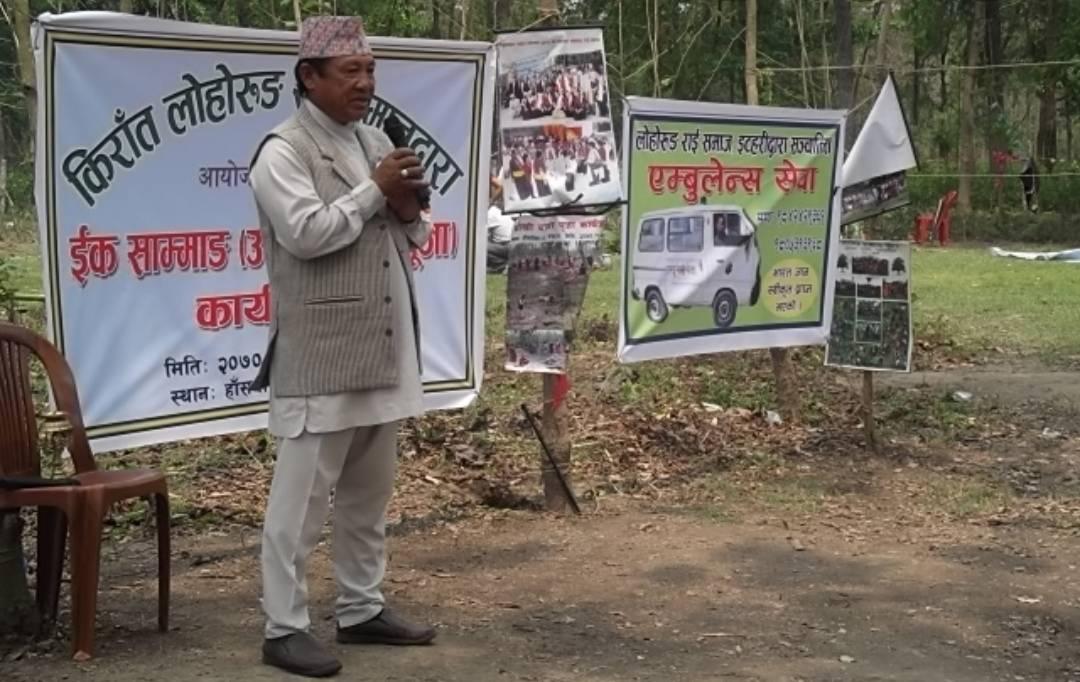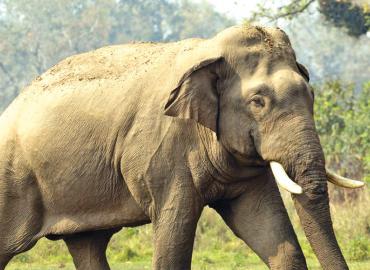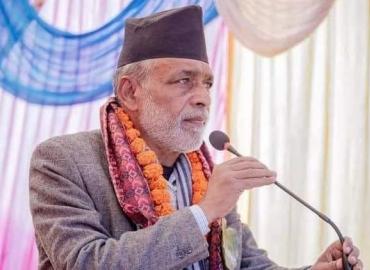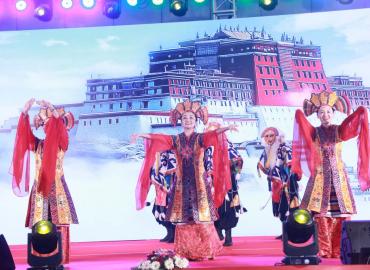ITAHARI, Feb 21 (RSS): As the world is celebrating UNESCO-declared International Mother Language Day on 21 February, today, Nepal's indigenous Lohorung language speakers are not in celebration mood.
They are saddened with shrinking speakers of this typical language spoken mostly in state 1.
Officially categorized by Nepal Language Commission as 'severely endangered' language of Nepal, Lohorung language is endangered even in the family of fluent speakers.
Family of Balkrishna Lohorung Rai, 62, is an example. Balkrishna Lohorung, originally from a village named Pangwa of Sankhuwasabha which is densely populated by Lohorung community, can speak every sentence of his mother tongue.
Balkrishna, also an ardent activist of Lohorung language promotion and preservation, can only speak his mother tongue with his wife Urmila. ''I have two sons. But, they can't speak their mother tongue as we do. They can just understand few words and sentences.''
Mohan Kumari Rai, 55, is another fluent Lohorung speaker. Professionally a primary school teacher at Kaseni Secondary School of Belbari, Morang, Mohan Kumari can use her original language only with her nonagenarian father-in-law Amar Bahadur Rai.
''I talk my mother language with my husband Chakra Bahadur Rai occasionally. But, he can't speak to the level of my father-in-law'', said Rai who was born and raised at a Lohorung-majority indigenous village called Diding Danda in the eastern hilly district of Sankhuwasabha.
Mohan Kumari has 5 siblings, 2 brothers and 3 sisters. None of them can speak to her level. ''They can figure out Lohorung words and sentences. However, they can't reply well'', she said.
Marriage, migration contributing growing loss of Lohorung speakers
There is not any publicly available data on the exact population of state 1-based Lohorung in Nepal.
Based on Nepal's latest census carried out in 2011, there are only 3633 Lohorung speakers in state 1. This number is not increasing owing to various societal and economic factors, said Bigyan Rai, the fluent Lohorung speaker from Itahari, Sunsari.
''There is trend of inter-caste marriage'', opined Rai, ''This dilutes typical mother tongue and the inter-caste couples prefer Nepali language instead of any one of their mother tongues.'' Besides, marriage, migration is another reason for diminishing population of new generation of Lohorung language, said Balkrishna Lohorung, who is campaigning for mother tongue teaching to younger generations.
''Unlike past, these days, people of our communities migrate to many urban areas of Nepal and also fly foreign lands for job and permanent settlement'', said Balkrishna Lohorung. ''This has decreased our indigenous language spoken since centuries by our ancestors.
''Dictionary, digital content and pre-school in mother tongue saves our language''
According to Mohan Kumari Rai, the primary teacher at community school, Lohorung language can survive with strong support by local government. She said early education in mother tongue together with nationwide speaking Nepali language can help afloat Lohorung language in indigenous tongues.
''We have bad practice of teaching English language in early school which hasn't brought in desired results'', she said, ''Instead, it has killed mother tongue of many indigenous communities in Nepal.'' She said introducing mother tongue education to all Lohorung-majority villages could help survive this vanishing language from Nepal.
Balkrishna Lohorung Rai said creating well-researched dictionary and making sufficient digital contents are best ways to teach minority indigenous language like Lohorung to newer generations. For this, he suggested, governmental agencies must support.
''Our community has compiled a Lohorung dictionary of around 3 thousand words. But, this is just in the hand of some curious Lohorung speakers and activists'', he said, ''This must be updated and upgraded every year digitally.''






















